
Middle East Meets Middle America
An ancient cuisine is finding a foothold in the mainstream.
Article Content
Middle Eastern cuisine is a category as vast and broad as, well, the desert.
Distinguished by intoxicatingly aromatic spices and herbs, generous vegetable inclusions, plant-based proteins such as chickpeas and other legumes, and healthy fats pressed from sesame seeds and olives, it offers a bounty of dishes for vegetarians and vegans as well as for lovers of chicken, lamb, and beef (though not pork because of halal and kosher prohibitions).
A significant part of the Middle East lies on the eastern edge of the Mediterranean Sea, and although there is some overlap with what is commonly known as Mediterranean cuisine, the region’s food, like its population, is wide-ranging, distinctive, and diverse.
“Aroma is a key component of many [Middle Eastern] dishes, as they are spice-forward, with herbs, blends, and pastes that create compelling, craveable smells,” says Claire Lancaster, strategist, food and drink, for trend forecaster WGSN.
A shift toward plant-based diets is lifting the cuisine’s profile. As consumers seek new ways to cook with and enjoy vegetables, they’re likely to discover more Middle Eastern dishes, many of which are vegetable heavy, Lancaster adds. “With health as the primary reason for turning to a plant-based diet, there will be a bigger demand for less processed, vegetable-forward main meal solutions to complement the many meat alternatives already available,” she says.
Westerners are by now rather well acquainted with hummus and falafel, having sampled these popular chickpea comestibles from food stalls and carts, fast-casual establishments, dine-in restaurants, and grocery store shelves.
In fact, hummus is the third most common dip on menus, after guacamole and salsa, according to Datassential’s MenuTrends, points out Amy Marks-McGee, whose Trendincite consultancy tracks food and beverage trends.
A pureed blend of chickpeas, tahini (sesame seed sauce or paste), garlic, lemon, olive oil, and often other flavorings, hummus is a popular dip and spread. Usually deep-fried, falafel is a balled-up blend of ground chickpeas, often with parsley, onion, garlic, spices, and other ingredients.
“Middle Eastern dishes and ingredients have been increasing their menu penetration in foodservice for years,” notes Mike Kostyo, Datassential trendologist.
“Hummus is up 17% on menus in the past four years; falafel is up 27%, and shakshuka (eggs poached in a sauce of tomatoes, olive oil, peppers, onion, and garlic, commonly spiced with cumin, paprika, cayenne pepper, and nutmeg) is up a whopping 119%,” Kostyo reports.
The global hummus market is expected to grow at a compound annual growth rate (CAGR) of roughly 3.1% to reach $910.9 million in 2024, according to MarketWatch, Marks-McGee adds.
Consumers Crave More
Popular as hummus and falafel continue to be, it seems as though the public is ready for more. “We have been blending and developing Middle Eastern seasoning blends for years, and we have definitely seen an uptick in the rich flavor profiles from this region in recent months,” says Dax Schaefer, corporate executive chef and director of culinary innovation for Asenzya, a maker of custom spice blends and functional ingredients.
Ingredients that are ripe for exploration and show signs of wide acceptance, says Schaefer, are the spice blend za’atar and the spicy, herbal Yemini hot sauce zhug, which features a pesto-like texture and often accompanies falafel and sandwiches. “Both of these have amazing depth of flavor . . . and most importantly, are extremely delicious,” Schaefer adds.
Zhug, made with cilantro, jalapeño, garlic, cumin, cardamom, black pepper, cloves, lemon, and olive oil, is popping up all over North American menus, says Juliet Greene, corporate chef for Mizkan America.
Preserved lemon has also seen a resurgence on restaurant menus and retail shelves, according to Greene. Preserved in salt and lemon juice, “it is more than the sum of its parts. It is funky, briny, bright and acidic, yet spicy and soulful,” she says. Long used as a flavoring agent in tagine (a slow-cooked, spicy North African meat and vegetable stew) or as a condiment, it is now turning up in everything from butter sauces to salad dressings, she adds.
Baharat is also emerging, Greene observes. The Eastern Mediterranean spice blend combines cumin, cardamom, mint, nutmeg, oregano, black pepper, and red jalapeño puree. The puree helps hydrate the spices and creates a consistent paste to add to beef, lamb, and vegetables.
Za’atar and harissa are flavors that are expected to become more mainstream within the next few years, says Melanie Zanoza Bartelme, global food analyst for market research firm Mintel.
Za’atar, an aromatic and tangy blend of dried thyme, oregano, marjoram, sumac, and toasted sesame seeds, is ubiquitous in the Middle East. Popular as a flatbread topping, it dates back to ancient times. Harissa is a garlicky hot chili pepper paste from North Africa that includes caraway and coriander seeds, cumin, and olive oil and gives depth to cooked meats and vegetables.
“There is a lot of awareness” of both flavorings, says Zanoza Bartelme, although she adds that trial is still low. A Mintel survey conducted in March found that nearly half of consumers are aware of za’atar and harissa, and interest in trying both flavors is significant, especially among millennials.
According to Mintel, 44% of U.S. consumers (53% of millennials) who consumed protein in the past three months are aware of harissa, 17% (27% of millennials) have tried it in a protein source (meat or meat alternative), and 28% (37% of millennials) are interested in doing so.
Also according to Mintel, 40% of U.S. consumers (50% of millennials) who have consumed proteins in the past three months are aware of za’atar; 14% (23% of millennials) have tried it in a protein source (meat or meat alternative), and 26% (34% of millennials) are interested in doing so.
Consumers are also using spices and flavors associated with the Middle East in classic and comfort foods to give them a new twist, says Anna Cheely, chef and senior scientist for Kalsec. Trending flavors, she adds, are sumac (a tart-tasting spice that is an ingredient in za’atar), cardamom, tahini, za’atar, labneh (strained yogurt with the consistency of soft cheese, often seasoned for use as a dip or spread), and zhug.
“The most interesting thing is that consumers are enjoying dishes like hummus, pita bread, falafel, and even tabouli and do not necessarily know that they have Middle Eastern origins,” says Pamela Oscarson, consumer insights manager for FONA International.
Giving consumers a safe way to explore food and make it approachable is key to introducing new flavors that could really take off in the marketplace, says Schaefer. The example he gives has to do with ras el hanout, a North African seasoning blend that can contain as many as 30 different ingredients. In Arabic, ‘ras el hanout’ means ‘head of the shop,’ implying it is a mix of the best spices the shopkeeper has to offer.
“Ras el hanout . . . is very, very popular in the Middle East. Every spice shop has its own blend. It’s kind of what separates one shop from another. It’s incredibly flavorful, incredibly great, . . . but the name is quite a mouthful,” Schaefer explains.
Years ago, Schaefer was involved in production of a roast chicken dish seasoned with ras el hanout, which was unfamiliar to customers. Because they didn’t know what it was or have any clue as to whether they might like it, it was largely ignored. When the name was changed to Moroccan Chicken, it sold like crazy, he relates. Positioning is important, Schaefer concludes. “People want to explore, but they want to feel safe about it.”
Foodservice Footprint Grows
Though the COVID-19 pandemic has hurt restaurant traffic badly, the number of establishments featuring Middle Eastern fare is on the upswing, market watchers say.
“Middle Eastern restaurants are indeed opening faster today,” Kostyo affirms. According to Datassential’s Firefly database, which tracks food operators across the United States, there are nearly 3,300 Middle Eastern restaurants, almost 100 more than last year. That’s about 0.5% of the total U.S. restaurant population, but it’s growing, Kostyo adds.
There has been an “explosion” of Middle Eastern restaurants opening in North America, the United Kingdom, and Europe, says Lu Ann Williams, global insights director for Innova Market Insights. Williams attributes the cuisine’s appeal to its ability to suit any taste—from meat eaters to vegetarians to the health conscious.
Consumers and diners “can’t help but notice” the growing availability of Middle Eastern foodservice, especially in the fast-casual sector, with chains like Naf Naf Middle Eastern Grill and Roti, says Zanoza Bartelme.
Naf Naf and Roti “do a great job,” notes Schaefer. “Both use concepts similar to the Chipotle model of ‘build your own,’ allowing a combination of comfortable exploration and personalization for each guest,” says Schaefer.
In Los Angeles last March, chefs Badr Fayez of Saudi Arabia and Adlah Alsharhan of Kuwait opened Bowlila, with a chickpea-based menu featuring international variations of balila, a popular street snack of simmered, seasoned chickpeas.
Bowlila’s entirely plant-based, gluten-free menu (with the exception of its Persian Pita) features chickpea bowls with Thai, Italian, Japanese, Jamaican, Mexican, Argentinian, and classic Middle Eastern flavors. The Classic Bowl features chickpeas, cumin, lemon, chili flakes, garlic oil, beet-pickled cauliflower, rainbow slaw, crispy fried onions, chili-lime corn crunchies, and jalapeños. Chic (as in chickpea) Mango Pancakes, Pesto Mac, and fresh-squeezed Rosewater Lemonade round out the offerings.
“We really focus on getting the flavors [and textures] right because it’s vegan,” says Fayez. “We have both lived in different parts of the United States, so we are familiar with [American] comfort foods and can put our own twist on them. We made the menu international to make it familiar to the largest number of people.”
Balila is a very traditional snack, and in different countries they call it different names, but it’s always chickpeas, cumin, and pickled vegetables with other spices and flavors added, Fayez explains.
Aiding the growth of Middle Eastern foodservice outlets are food stalls and small restaurants being opened by Syrian refugees, says Lancaster. “However, the pandemic has dealt a severe blow to small independent restaurants, so the future is unclear at this point,” she adds.
Prior to the pandemic, a variety of Middle Eastern restaurants were growing, says Marks-McGee. Fast-casual chain Cava grew to 80-plus locations since launching in 2011, expanding when it bought Zoe’s Kitchen and its 250 locations in 2019. Cava has also expanded its line of dips and spreads to Whole Foods nationwide with 10 SKUs, including hummus flavors: Organic Caramelized Onion, Organic Roasted Garlic, Organic Traditional, Roasted Red Pepper, and Spicy.
Additionally, says Marks-McGee, Little Chickpea opened in Portland, and is known for its frozen ice cream–like treats made from chickpeas and sugar and rendered in unique flavors such as Blackberry Basil, Mint Matcha, and Szechuan Strawberry. Zooba, an Egyptian fast-casual restaurant with six locations in Cairo, opened its first U.S. location in New York City’s trendy Nolita neighborhood in 2019. Operation Falafel, a Dubai-born fresh-casual chain, has plans to expand to New York, London, and Paris. In February, the company announced it will roll out 400 shops around the world with selected franchise partnerships by 2022.
Middle Eastern flavors are not only seen in Middle Eastern restaurants, says Kostyo. “We see a range of Middle Eastern flavors growing on menus, like harissa, za’atar, and sumac. Now you can find harissa at major national chains like Wingstop, Red Robin, and Red Lobster.”
What’s Trending
The biggest indicator of how well a cuisine is going to be received comes from quick-service restaurants, says Asenzya’s Schaefer. When it starts to appear on quick-service menus, it’s a sign that the cuisine is doing well, he observes.
“You can see consumers are ready for it,” says Schaefer. “They’re getting educated. What’s successful on menus today will end up in the frozen section in the retail world in the next year or two.”
Foodservice trends and flavors have a strong impact on consumer packaged goods (CPGs), agrees Datassential’s Kostyo. “Conagra’s Healthy Choice line, for instance, includes a shakshuka power bowl option, while the hummus section at any given supermarket has exploded and now includes alternatives and dessert options.”
“Foodservice typically does feed CPG, but CPG is driving innovation forward more now given their stronger competitive position due to the pandemic,” says Maeve Webster, president of Menu Matters consultancy.
Artisanal food company New York Shuk introduced Hawaij Premium Middle Eastern Spice Blend, a Yemeni blend of curcumin, cumin seed, black pepper, cardamom, salt, and other spices for dry rubs, slow simmered dishes, soups, stews, and grilled poultry, fish, and meat. New York Shuk’s Middle Eastern Spice Collection also includes Za’atar, Shawarma, Baharat, Ras El Hanout, and Ground Sumac Berries, released in 2018. (Shawarma is roasted meat, usually on a spit, that is shaved for serving in sandwiches.)
McCormick For Chefs, a division of McCormick & Co., launched five new Global Blends in July, including Harissa Seasoning, Moroccan Seasoning, and Za’atar Seasoning.
Between March and June of this year, Cedar’s Mediterranean Foods introduced Labne, Baba Ghannouj, Topped Organic Lemon Hommus, Fat & Oil Free Original Hommus, and Mediterranean & Hot Pepper Tzatziki (cucumber yogurt sauce) made with Aleppo pepper and harissa. (The company uses what it says is the original spelling of hummus in the product names.)
“We’re seeing a continuation of some of the Middle Eastern flavors that were trending well before the pandemic: tahini used both traditionally and incorporated into a wide array of foods from cookies to unique sauces, falafel (which travels well and can be customized with a variety of spices, herbs, and inclusions), baklava (a phyllo pastry, honey, and nut confection that has many options for customization), baba ghanoush (pureed eggplant and sesame seed dip), baharat, ras al hanout, za’atar, and sumac,” says Webster.
Food and beverage launches featuring Middle Eastern flavors are mainly found in the seasonings and ready meals categories, says Williams of Innova Market Insights. “West Europe is the top region for new food and beverage launches tracked featuring Middle Eastern flavors, with the United Kingdom, Netherlands, and France among the top three countries for new product launches in 2019,” she notes. With a CAGR of 47.6%, the Netherlands showed the fastest growth in new product launches between 2015 and 2019, Williams adds.
There are more and more flavor variations of hummus appearing at retail, even many without a Middle Eastern connection, such as beet, hatch chili, and dill, notes Roger Lane, marketing manager at Sensient Flavors.
Hummus has transformed into dessert hummus with flavors like dark chocolate and seasonal favorites like pumpkin spice—a stretch from the traditional savory chickpeas, and is now being enjoyed as a healthy dessert option, says FONA’s Oscarson.
Hummus is the “it” ingredient trending in CPG products, says Marks-McGee. She notes that hummus is appearing in other applications such as the O’dang Hummus Dressing line, which recently did a refresh that includes both new and reformulated dressings.
Lane also thinks the smoky, savory, and sweet baharat will catch on with the public, as will rose. Yes, as in the pretty flower. “Rose is a popular ingredient in Middle Eastern cuisine, and with the rise of floral flavors, we’re seeing [rose] included not just in beverages and desserts, but savory dishes as well,” Lane adds.
Fayez agrees. “Rosewater is used mostly in sweets,” he says. “It’s also used in savory, but not a lot yet.” He has experimented with meat dishes, adding sage, rosewater, and butter.
There is also a rising demand for sour flavor profiles, according to Lancaster. “We think it will be vital for brands to use sour notes to build and enhance the complexity of premade sauces and mixes going forward,” she says. “Persian cuisine in particular is a great inspiration for this, as it employs citrus fruits, tart tamarind, and tangy pomegranates to deliver pucker.”
Falafel is also gaining momentum, Marks-McGee adds. In the United Kingdom, Artisan Grains launched a trio of gluten-free and vegan falafel mixes in Beetroot & Chili, Pumpkin & Quinoa, and Super Greens varieties. And Dina Foods in the United Kingdom offers Green Pea Falafel, Beetroot Falafel, and Sweet Potato Falafel, all designed for food-to-go operators, says Marks-McGee.
Chickpeas are a vegan-friendly ingredient, and a good source of protein, Marks-McGee continues. She notes that chickpeas are appearing in snacks such as Biena, a line of baked chickpea puffs in Blazin Hot, Aged White Cheddar, and Vegan Ranch flavors, and The Good Bean offers several varieties of chocolate-covered chickpeas. In addition, Banza debuted a new line of pizzas made with a chickpea crust.
What’s Next
“We are going to continue to see a transformation of popular Middle Eastern dishes and flavors expand beyond the traditional and into more everyday, consumer-accepted dishes,” Oscarson believes.
“Honestly, we’ll have to see how quickly foodservice bounces back after the fall and winter,” Webster cautions. “We need the innovation engine of fine dining and independent operators, who are willing to take chances on far less-familiar ingredients and foods, bringing them to . . . market and encouraging consumers to experiment. We also have the issue of a somewhat broken supply chain making access to less common or more difficult-to-source items more challenging to operators.”
Webster believes innovation will occur in the beverage space because beverages are easy for consumers to experiment with and many Middle Eastern nonalcoholic beverages have great potential, including limonana (mint lemonade), amar al din (an apricot juice or nectar beverage), rumman (a pomegranate juice and orange blossom water beverage), jallab (a grape molasses and rosewater beverage smoked with incense), and Turkish coffee.
“I think we’ll see greater experimentation with halva (made of sesame flour and honey) as a dessert ingredient or option,” Webster adds. Halva, a 3,000-year-old confection that is high in iron, is indeed reemerging in the spotlight as a better-for-you dessert option, says Mintel’s Zanoza Bartelme.
Dukkah, an Egyptian condiment typically made of ground nuts, seeds, spices, and herbs that is used as a dip, topping, or crust for fish or meat, is “a vastly underused blend that is incredibly versatile and customizable and will likely grow going forward,” says Webster. “Cardamom is another underappreciated spice that is and will continue to show up less as a supporting player and more as the star,” she continues. “Muhamarra (a hot pepper dip made from Aleppo peppers) is another great one that should grow, particularly with the ongoing plant-forward focus as this is plant-based, and again, infinitely customizable.”
Kostyo says the “next-level” flavors of labneh, dukkah, zhug, toum, rosewater, and preserved lemon are on the verge of wider adoption. “They each have applications that could drive their growth,” he explains. “Toum, for instance, is a traditional Lebanese garlic sauce, and U.S. consumers love garlic—in fact, it’s their second favorite sauce or flavor overall after spaghetti sauce, according to our flavor database. And preserved lemon could see wider applications as many consumers are seeking out more citrus options and vitamin D to boost their immune systems.”
Opportunities to expand the market for Middle Eastern cuisine are plentiful, experts agree. WGSN’s Lancaster puts it this way: “There is so much to discover that we have barely begun exploring.”


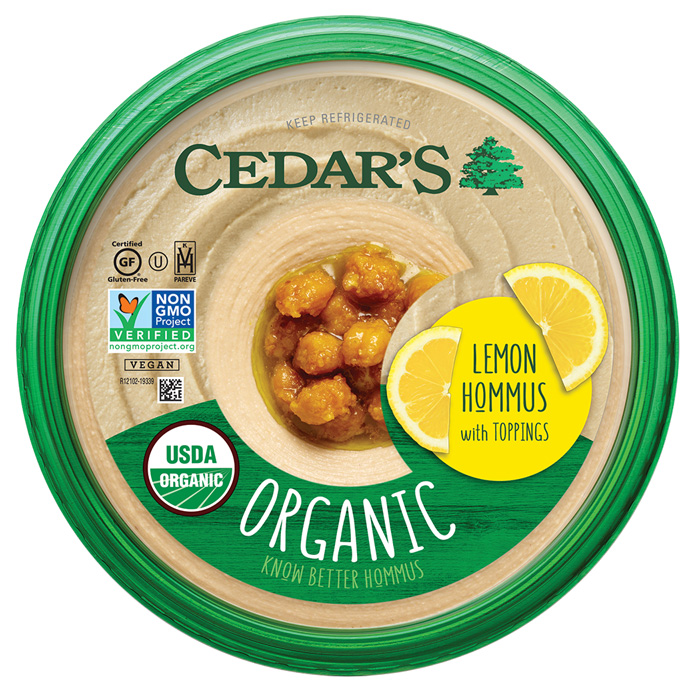

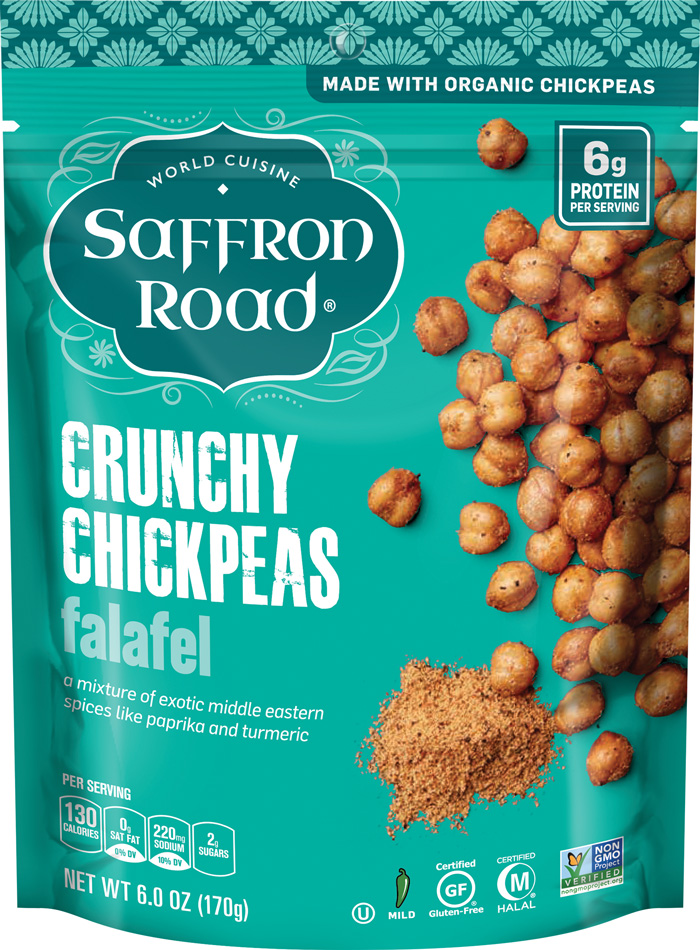

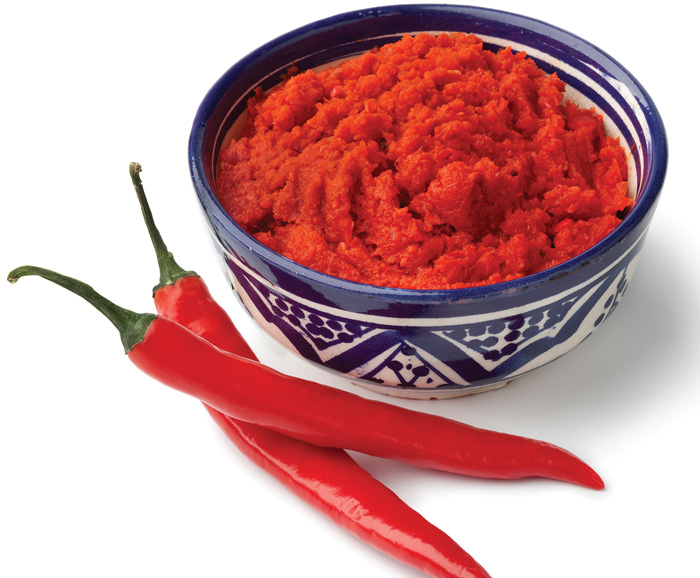

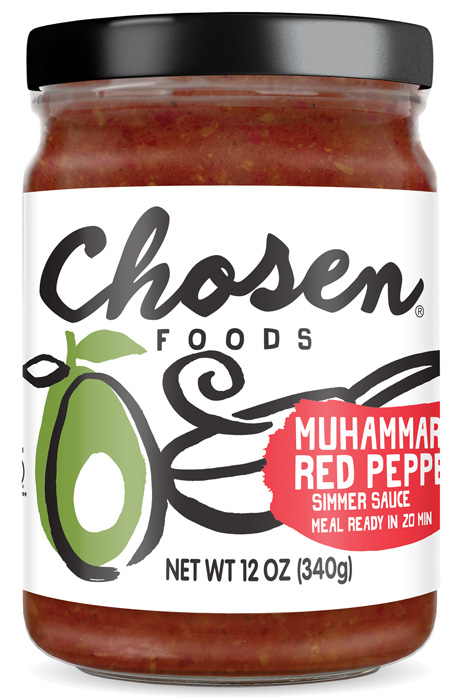

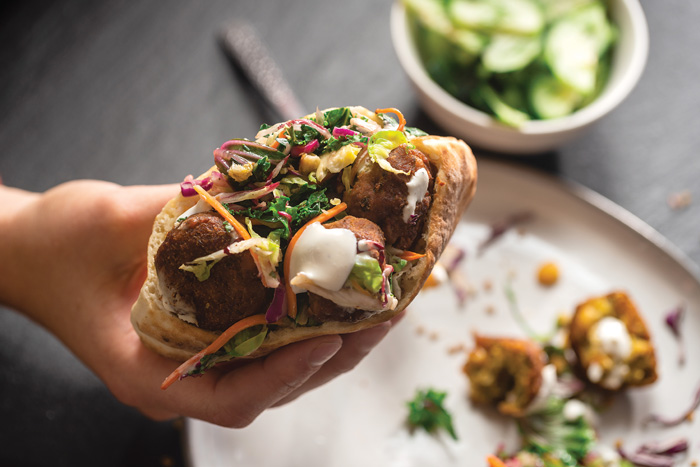

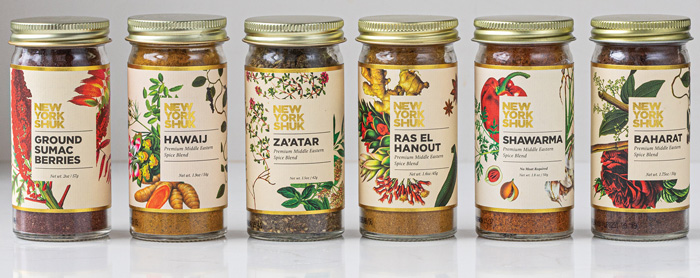

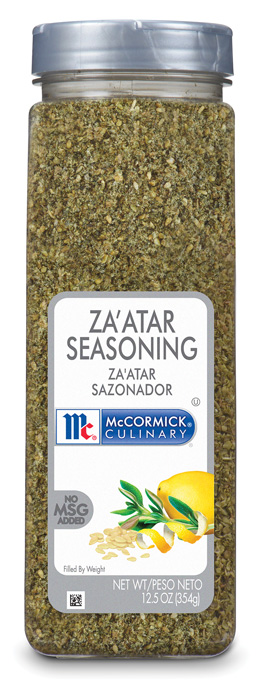



.jpg?mw=500&hash=D1E2E8B94FED0CCA2F5CEA8243FD787B)

